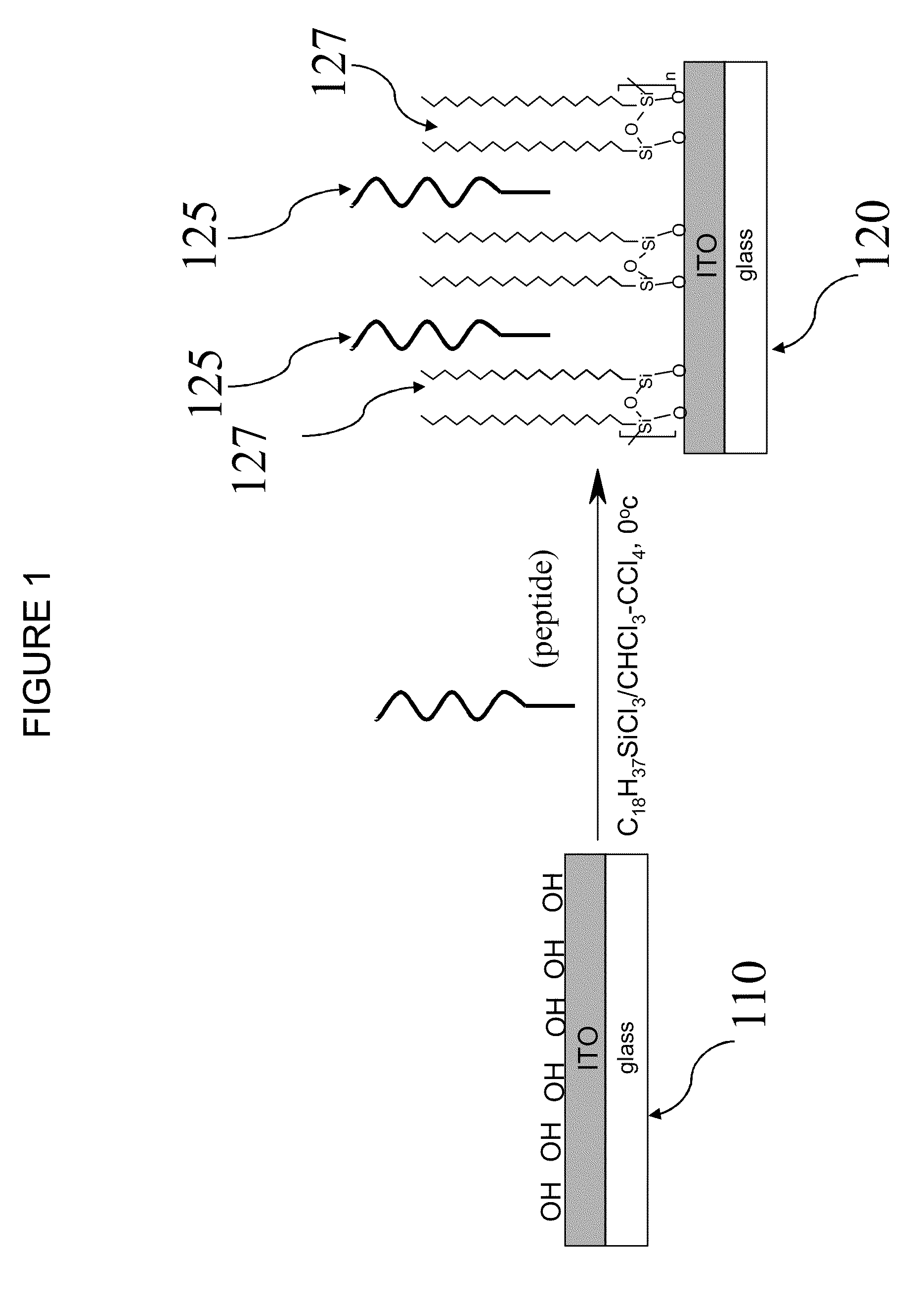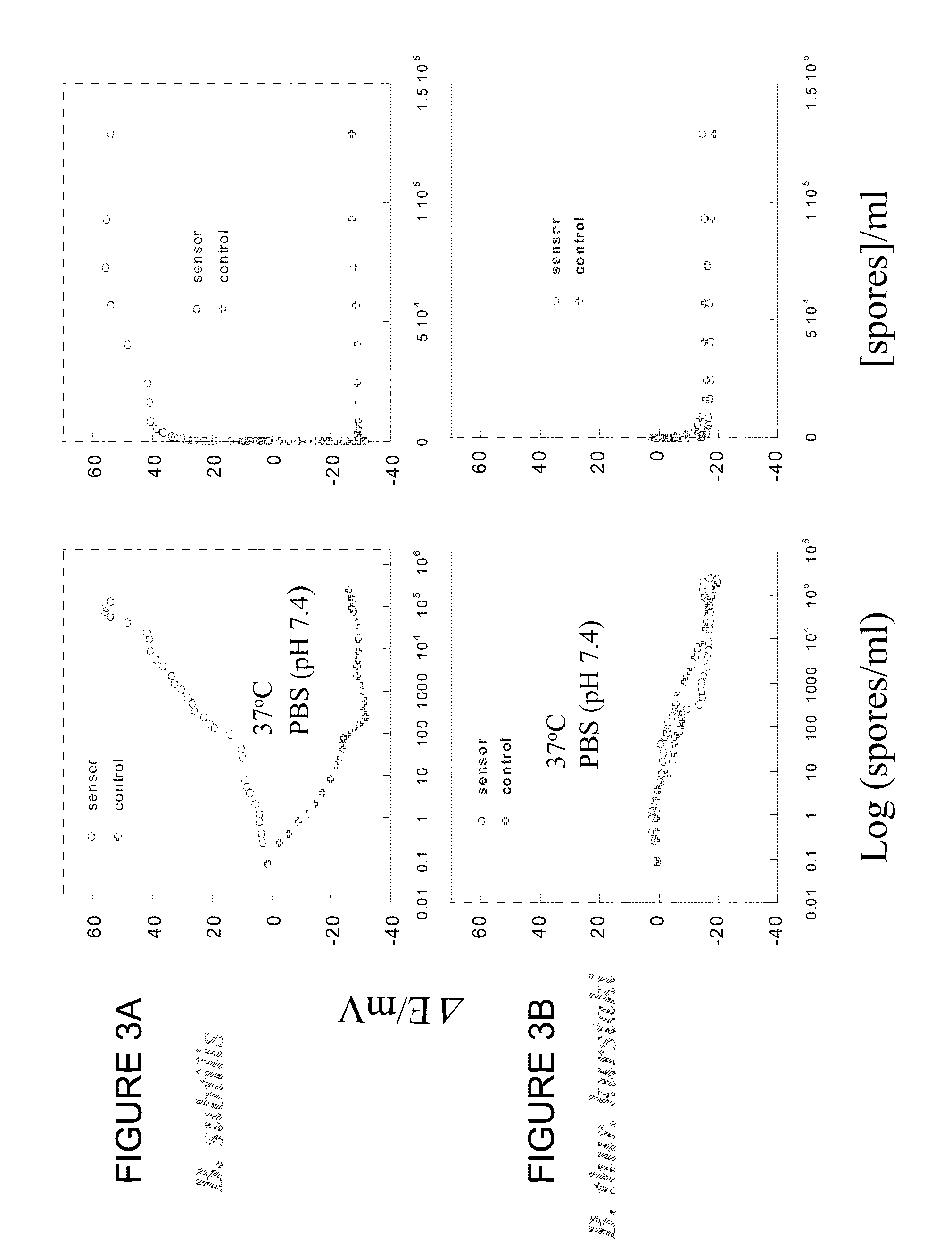Methods for detecting and/or quantifying a concentration of specific bacterial molecules using bacterial biosensors
a biosensor and bacterial technology, applied in the field of sensors, can solve the problems of large, expensive, complex analysis procedures, and many of the technologies developed and/or currently being used, and achieve the effects of reducing and increasing the number of samples
- Summary
- Abstract
- Description
- Claims
- Application Information
AI Technical Summary
Problems solved by technology
Method used
Image
Examples
Embodiment Construction
[0029]The following description is presented to enable one skilled in the art to make and use our invention, and is provided in the context of further particular embodiments and methods. The present invention is not limited to the particular embodiments and methods described.
[0030]Polysiloxane monolayer immobilization methods are described in §4.1. Exemplary conditions for the preparation of our inventive biosensor(s), as well as measurements of the properties of experimental bio-sensor(s), are described in §4.2. Finally, exemplary peptide / ODS biosensors are described in §4.3 for B. subtilis spores and B. antracis Sterne.
[0031]§4.1 Performing Polysiloxane Monolayer Immobilization
[0032]Our inventive immobilization methods generally involves: (1) polymerizing a layer of polysiloxane onto a substrate, and (2) allowing selector molecules to be physically adsorbed to (or coupled via one or more intermediate elements with), or otherwise immobilized on the substrate using the polymer layer...
PUM
| Property | Measurement | Unit |
|---|---|---|
| surface resistance | aaaaa | aaaaa |
| surface area | aaaaa | aaaaa |
| pH | aaaaa | aaaaa |
Abstract
Description
Claims
Application Information
 Login to View More
Login to View More - R&D
- Intellectual Property
- Life Sciences
- Materials
- Tech Scout
- Unparalleled Data Quality
- Higher Quality Content
- 60% Fewer Hallucinations
Browse by: Latest US Patents, China's latest patents, Technical Efficacy Thesaurus, Application Domain, Technology Topic, Popular Technical Reports.
© 2025 PatSnap. All rights reserved.Legal|Privacy policy|Modern Slavery Act Transparency Statement|Sitemap|About US| Contact US: help@patsnap.com



